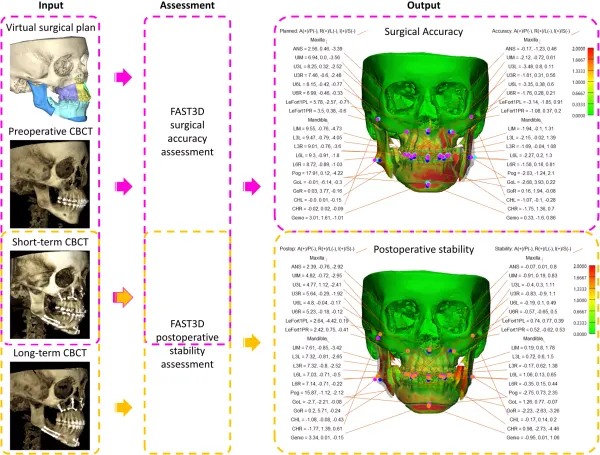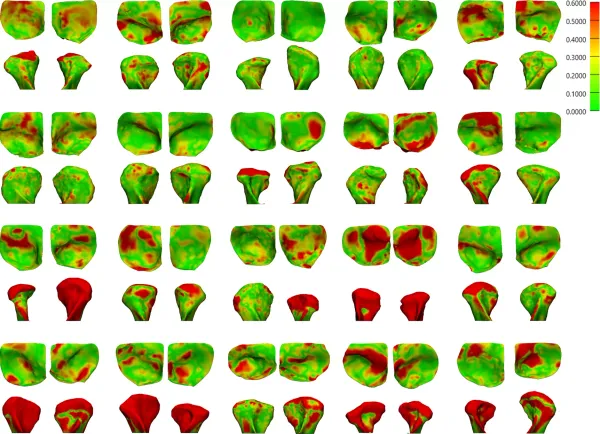Does the Glenoid Fossa Change following Orthognathic Surgery?
Authors: Holte MB, Nielsen TW, Sæderup H & Pinholt EM
In: Journal of Oral and Maxillofacial Surgery 2022; E-pub ahead of print
DOI Link: 10.1016/j.joms.2022.01.014
Abstract
Purpose: Glenoid fossa morphology may change following orthognathic surgery and may subsequently affect skeletal stability and functionality, however hardly documented. Hence, the purpose of this study was to evaluate the morphological change of the glenoid fossa two years after bimaxillary surgery.
Methods: A case series was performed including subjects diagnosed with maxillary and/or mandibular growth disturbances, who underwent bimaxillary surgery between March 2012 and November 2017 at the Department of Oral and Maxillofacial Surgery, University Hospital of Southern Denmark, Esbjerg, Denmark. Study variables were gender, age and postoperative condylar resorption. Subjects were sampled evenly within subgroups with and without postoperative condylar resorption. The outcome variable, three-dimensional morphological change of the glenoid fossa was calculated as surface distance in mm between superimposed pre- and postsurgical (two years) CBCT-scans, and were spatially divided into four regions. Evaluation of glenoid fossa changes of more than one voxel (> 0.3 mm) and comparison of subjects with and without postoperative condylar resorption were performed by one-sample and unpaired t-tests, respectively.
Results: Twenty subjects (sixteen female; four male; mean age 27.6 years) with class II malocclusion and maxillomandibular retrognathia were included. The glenoid fossa changes (0.36 mm) were significant (p = 0.021), and significantly larger in subjects with condylar resorption than in those without in the anterior-lateral (0.40 mm vs. 0.27 mm, p = 0.021) and anterior-medial fossa region (0.48 mm vs. 0.26 mm, p = 0.015).
Conclusion: Significant morphological fossa changes were found two years after orthognathic surgery, and subjects with postoperative condylar resorption showed a significantly higher degree of morphological change in the anterior glenoid fossa than subjects without.





